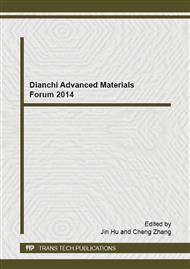p.297
p.302
p.307
p.312
p.317
p.323
p.329
p.335
p.339
The Effect of Norcantharidin on Proliferation and Invasiveness of SW579 Cell
Abstract:
To explore the effect of Norcantharidin on the biological behavior of SW579 cells. The method of MTT is used to detect the inhibition of Norcantharidin with different concentration on the proliferation of SW579 cells. Transwll assay detects the inhibition of cantharidin on the invasiveness of SW579 cells. And ELISA assay detects the related invasion protein MMP2. ELISA method is used to detect VEGF expression level, and to study the inhibition of cantharidin on the angiogenesis. MTT results indicate that cantharidin has inhibition effects on the proliferation of SW579 cell, and with the increase of concentration, the inhibition effects are enhanced. Transwll assay and ELISA assay indicates that cantharidin has inhibition effects on the invasiveness of SW579 cell. The results of VEGF suggest that cantharidin has inhibition effects on angiogenesis.
Info:
Periodical:
Pages:
335-338
Citation:
Online since:
November 2014
Authors:
Keywords:
Price:
Сopyright:
© 2014 Trans Tech Publications Ltd. All Rights Reserved
Share:
Citation:


